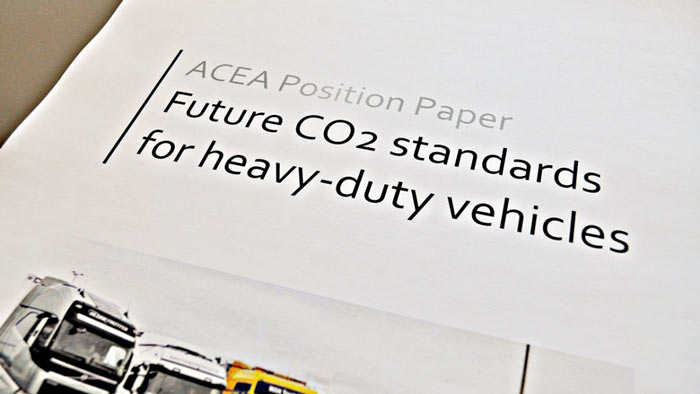
ACEA releases position paper on European Commission proposal on CO2 standards for new heavy-duty vehicles
The European Automobile Manufacturers’ Association (ACEA) has released a position paper on the European Commission’s proposed future CO2 standards for new heavy-duty vehicles published in May. The European Automobile Manufacturers’ Association represents the 15 major Europe-based car, van, truck and bus makers.
In March 2018, ACEA presented its position on future EU standards for CO2 emissions from new heavy-duty vehicles. Following the publication of the European Commission’s proposal in May, this position paper complements earlier ACEA proposals.
“Europe’s truck manufacturers are willing to commit to ambitious CO2 targets, provided that these are realistic and in line with what is technologically possible and economically viable,” ACEA said.
In its recent proposal, the European Commission suggested a review of CO2 standards in 2022, with the objective of reporting on the effectiveness of the proposed regulation. The commission proposed to review the following elements in 2022:
- Whether or not to expand the scope of the regulation to include all vehicle groups covered by the mandatory CO2 declaration system;
- To confirm or adjust the 2030 CO2 target upwards;
- To assess the effectiveness of the so-called ‘modalities’ – i.e., the incentive system for zero- and low-emission vehicles as well as the banking and borrowing mechanism – and to consider the need for continuing those modalities after 2030.
To ensure that the CO2 targets under discussion are also deliverable in practice, ACEA stated that the new regulatory framework “should strive to be cost-effective, reflect the diversity of the truck market, and enable innovation without imposing a technology choice.”
“Given the state of the market and technology today, a 7% CO2 reduction by 2025 would strike the right balance between being both ambitious and realistic,” the ACEA position paper stated.
In addition to a 2025 target, ACEA said it supports an “indicative CO2 target for 2030 that would apply to all vehicles covered by the mandatory declaration system, complemented by a comprehensive interim review in 2022. A 16% CO2 reduction by 2030 (based on a 2019 baseline) would be pragmatic yet progressive.”
The interim review of the 2030 CO2 target in 2022 should consider, among others, any new developments regarding standards for pollutant emissions, ACEA said.
“Moreover, it should be possible to adjust the 2030 target upwards or downwards in order to reflect the realities of the heavy-duty vehicle market at that point in time. For example, by taking into account the level of investment and the availability of the necessary refuelling and charging infrastructure for alternatively-powered vehicles, as well the market uptake of such alternative powertrains.”
ACEA added that it “is concerned about the extremely high amounts specified in the current proposal. Penalties should be in proportion to the cost of the technology needed and based on the right metric, reflecting the work performed by a heavy-duty vehicle. Therefore, in line with the Commission’s assumptions about vans and reflecting the specificities of the truck market, ACEA recommends that the penalty is set at EUR 570 (USD 666) per gramme CO2/tkm.”









